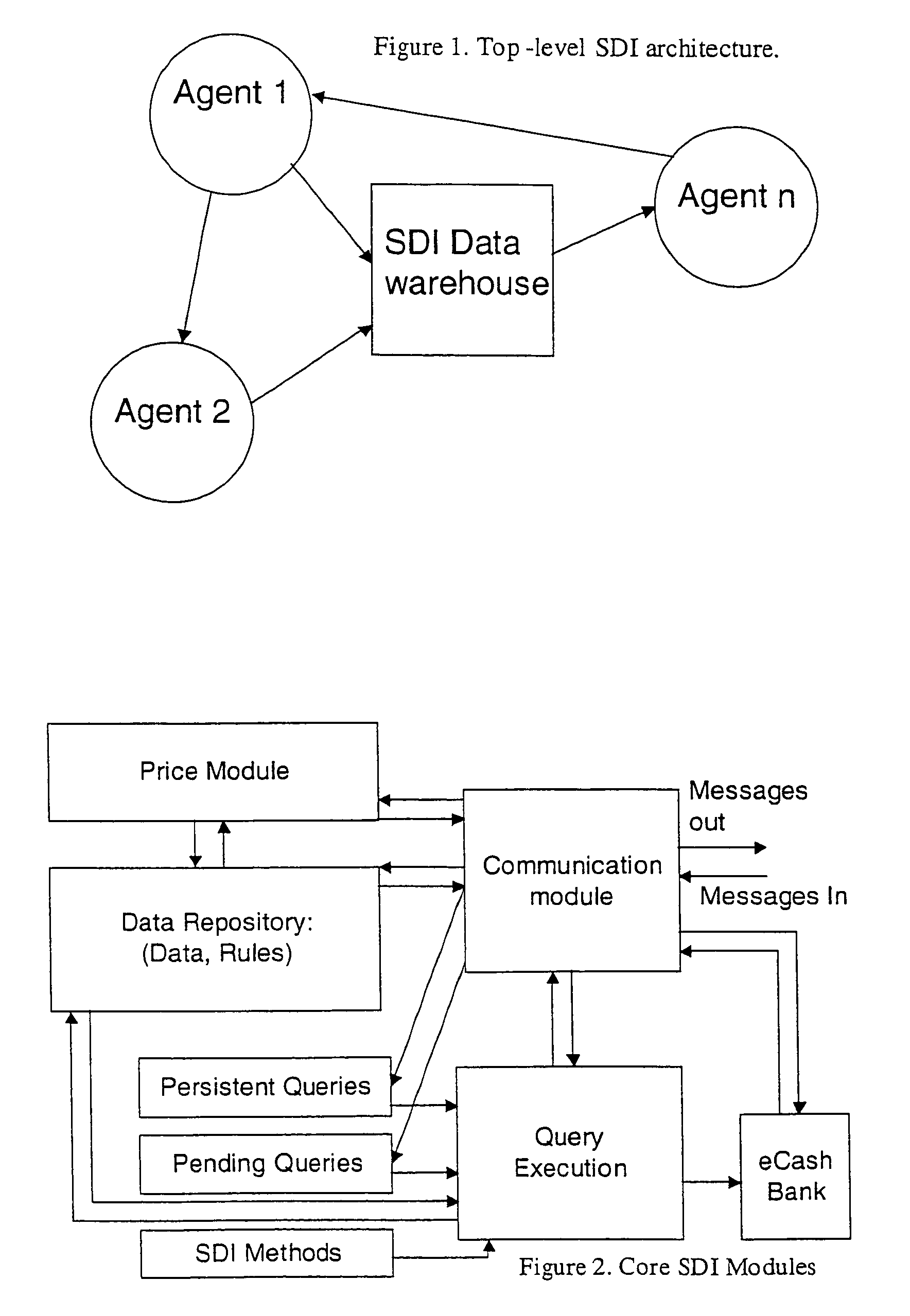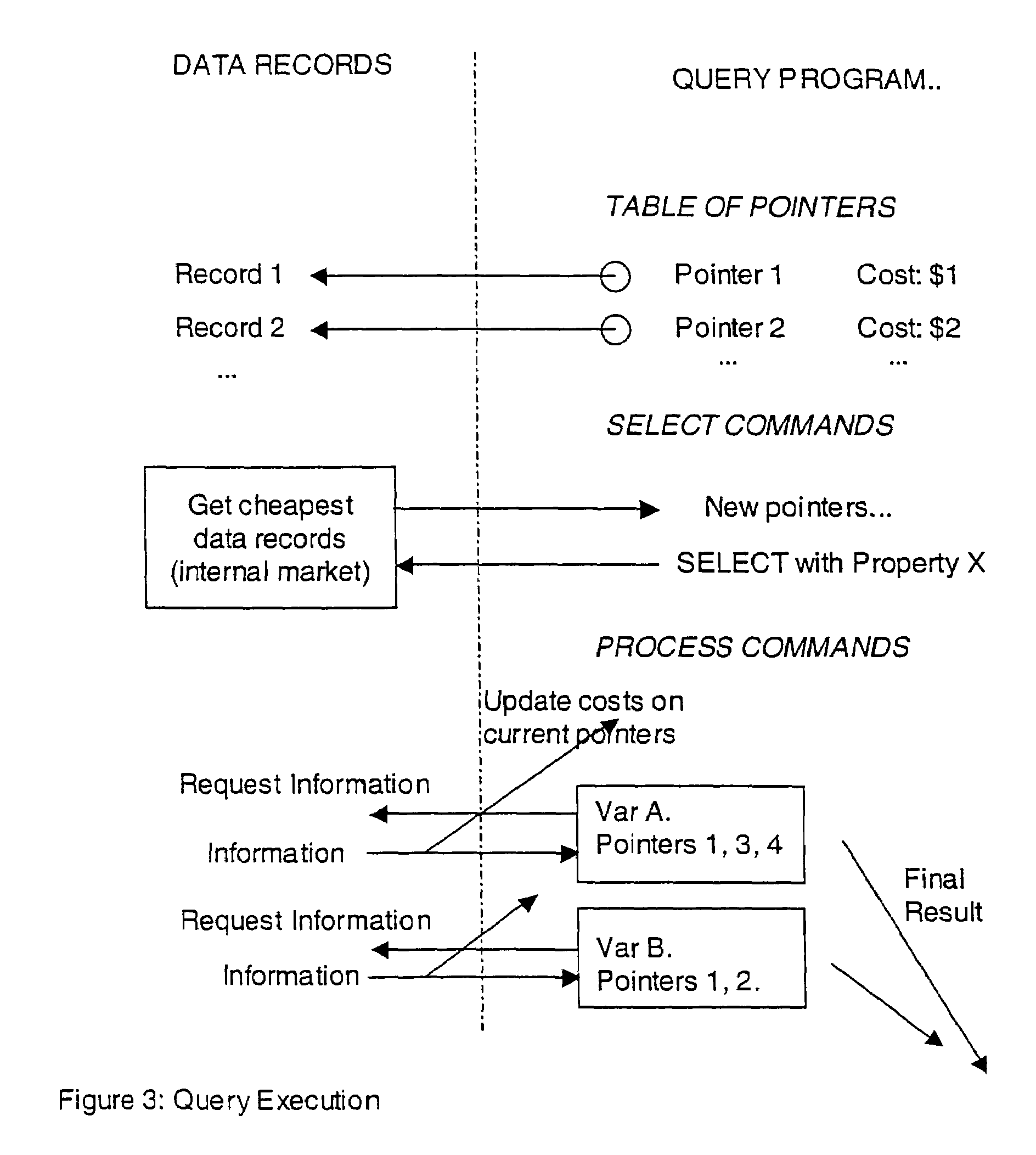Secure data interchange
a data exchange and data technology, applied in the field of secure data exchange, can solve the problems of user's desire for controlled personalization, large corpus of data extrapolation, and inability to be desirable, and achieve the effect of avoiding loss of privacy, facilitating bilateral exchange of profiles/preferences, and facilitating data exchang
- Summary
- Abstract
- Description
- Claims
- Application Information
AI Technical Summary
Benefits of technology
Problems solved by technology
Method used
Image
Examples
case 1
[0650](4) Generalizing Across Databases[0651]One of the most useful aspects of SDI is that it allows for inferences to be drawn across different databases through underlying connections in membership or content. An especially strong link can be made between commercial databases if they have customers in common. However, for reasons of privacy, individual customers may choose to use different pseudonyms when dealing with different vendors. This might be preferred by the individuals, but it weakens the inferences that can be made between fields occurring in different databases.[0652]The techniques chosen to infer correlations across different databases will depend on how many pseudonyms are shared in common. At one end of the spectrum, every customer uses a single pseudonym for all transactions, and makes an appearance in every database. At the opposite end of the spectrum, every customer uses a different pseudonym with every vendor, and may appear in only a single database.[0653] All...
case 3
P(Ck|Ai^Bj)=P(Ck|Ai)·P(Ck|Bj)[0667] All customers use several pseudonyms, and none appear in different databases[0668]In this situation, there are no common customer codes that can be used to create links across the databases. However, the mere fact that several databases have been brought together for analysis should imply that there are semantic commonalities in the data.[0669]Although each database contains different fields, it may be the case that those fields deal with related subjects. A human expert, knowledgeable in the content of the databases, the subtleties of the domain, and the overall goal of the analysis (e.g. the creation of recommendations), will be in a position to create a “common-information profile” that spans the databases. In essence, the common-information profile defines a format that allows vectors from different databases to share a common coordinate space.[0670]The idea is this: the expert designs a high-level vector format that embodies the content deeme...
PUM
 Login to View More
Login to View More Abstract
Description
Claims
Application Information
 Login to View More
Login to View More - R&D
- Intellectual Property
- Life Sciences
- Materials
- Tech Scout
- Unparalleled Data Quality
- Higher Quality Content
- 60% Fewer Hallucinations
Browse by: Latest US Patents, China's latest patents, Technical Efficacy Thesaurus, Application Domain, Technology Topic, Popular Technical Reports.
© 2025 PatSnap. All rights reserved.Legal|Privacy policy|Modern Slavery Act Transparency Statement|Sitemap|About US| Contact US: help@patsnap.com



